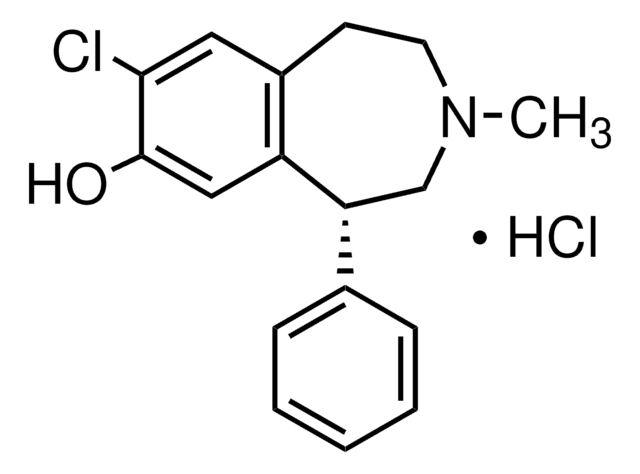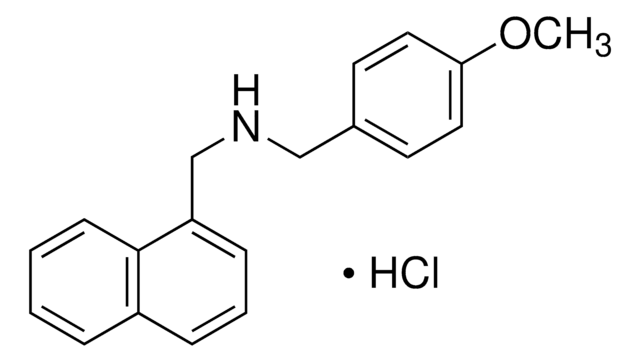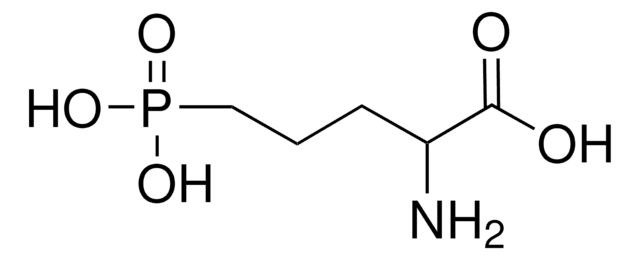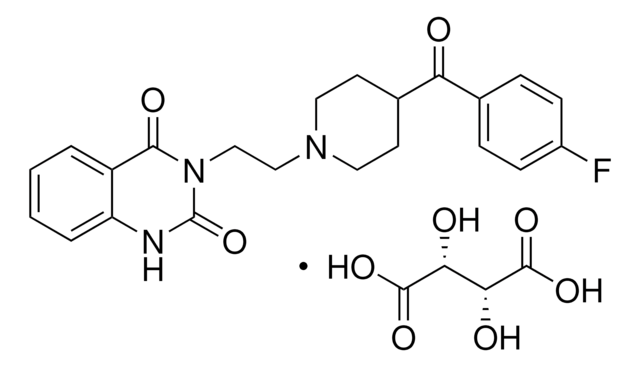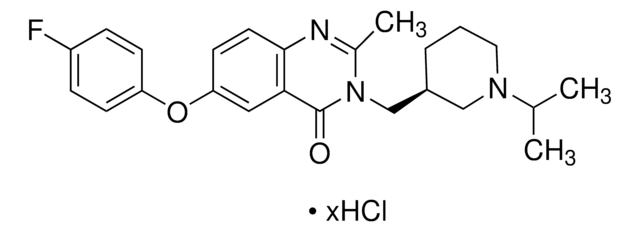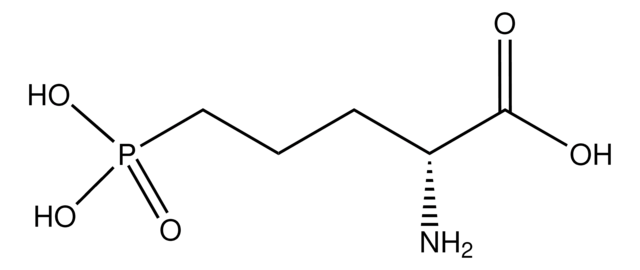T1567
Tertiapin-Q trifluoroacetate salt
≥97% (HPLC)
Synonym(e):
[Gln13]-Tertiapin, Ala-Leu-Cys-Asn-Cys-Asn-Arg-Ile-Ile-Ile-Pro-His-Gln-Cys-Trp-Lys-Lys-Cys-Gly-Lys-Lys-NH2 [Disulfide bridges 3–14, 5–18], TPNQ
Anmeldenzur Ansicht organisationsspezifischer und vertraglich vereinbarter Preise
Alle Fotos(1)
About This Item
Empirische Formel (Hill-System):
C106H175N35O24S4
CAS-Nummer:
Molekulargewicht:
2452.00
MDL-Nummer:
UNSPSC-Code:
12352200
NACRES:
NA.32
Empfohlene Produkte
Qualitätsniveau
Assay
≥97% (HPLC)
Form
lyophilized
Lagertemp.
−20°C
Angaben zum Gen
human ... KCNJ1(3758)
mouse ... KCNJ1(56379)
rat ... KCNJ1(24521)
Amino Acid Sequence
Ala-Leu-Cys-Asn-Cys-Asn-Arg-Ile-Ile-Ile-Pro-His-Gln-Cys-Trp-Lys-Lys-Cys-Gly-Lys-Lys-NH2 [Disulfide bridges 3–14, 5–18]
Biochem./physiol. Wirkung
Blocks the GIRK1/4 and ROMK1 members of the inward-rectifier K+ channel family.
Sonstige Hinweise
Non-air oxidizable tertiapin derivative.
Lyophilized from 0.1% TFA in H2O
Lagerklassenschlüssel
11 - Combustible Solids
WGK
WGK 3
Flammpunkt (°F)
Not applicable
Flammpunkt (°C)
Not applicable
Persönliche Schutzausrüstung
Eyeshields, Gloves, type N95 (US)
Hier finden Sie alle aktuellen Versionen:
Besitzen Sie dieses Produkt bereits?
In der Dokumentenbibliothek finden Sie die Dokumentation zu den Produkten, die Sie kürzlich erworben haben.
Synthesis of a stable form of tertiapin: a high-affinity inhibitor for inward-rectifier K+ channels.
W Jin et al.
Biochemistry, 38(43), 14286-14293 (1999-11-26)
Tertiapin (TPN), a small protein derived from honey bee venom, inhibits the GIRK1/4 and ROMK1 channels with nanomolar affinities. Methionine residue 13 in TPN interacts with residue F148 in the channel, located just outside of the narrow region of the
W Jin et al.
Biochemistry, 38(43), 14294-14301 (1999-11-26)
Tertiapin-Q (TPN(Q)) is a derivative of honey bee toxin tertiapin (TPN) whose methionine residue is replaced with a glutamine residue. TPN(Q) inhibits the ROMK1 and GIRK1/4 inward-rectifier K(+) channels with affinities very similar to TPN. However, unlike native TPN, TPN(Q)
W Jin et al.
Biochemistry, 37(38), 13291-13299 (1998-09-28)
Inward-rectifier K+ channels are a group of highly specialized K+ channels that accomplish a variety of important biological tasks. Inward-rectifier K+ channels differ from voltage-activated K+ channels not only functionally but also structurally. Each of the four subunits of the
Unser Team von Wissenschaftlern verfügt über Erfahrung in allen Forschungsbereichen einschließlich Life Science, Materialwissenschaften, chemischer Synthese, Chromatographie, Analytik und vielen mehr..
Setzen Sie sich mit dem technischen Dienst in Verbindung.